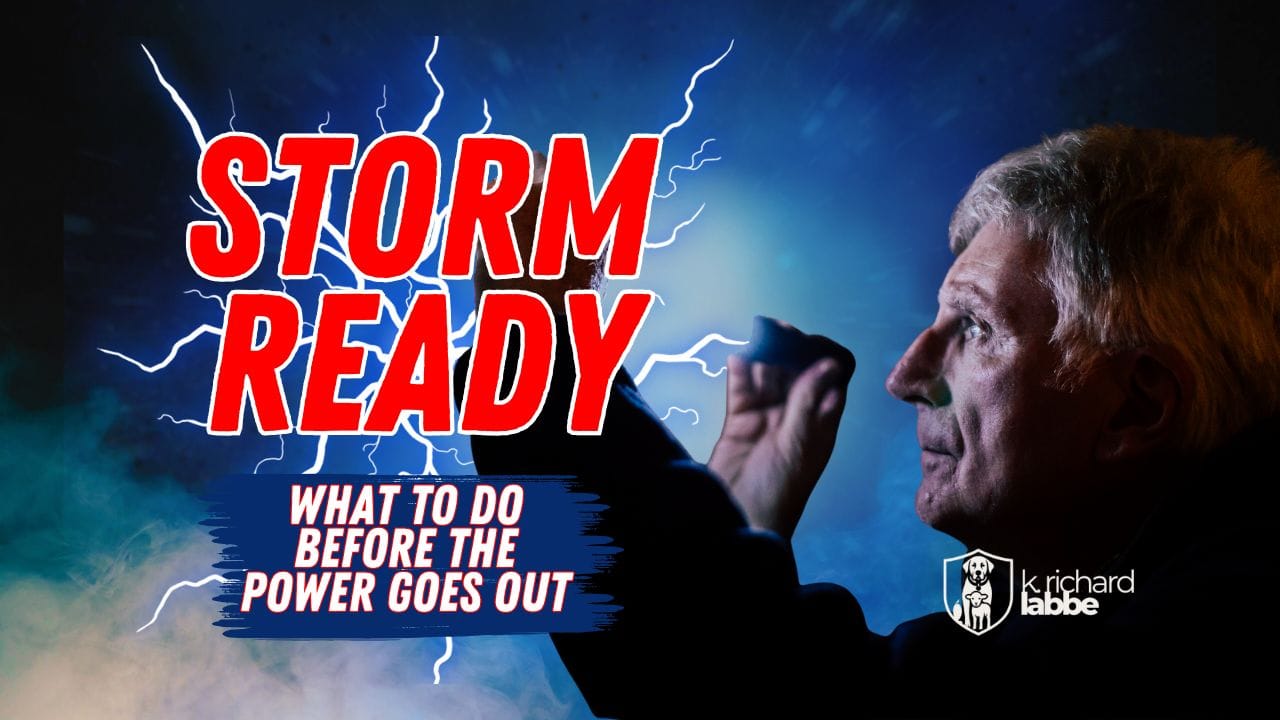Storm-Ready: What to Do Before the Power Goes Out
A calm checklist to help you prepare in under an hour.

Wondering how to prepare for a power outage before a summer storm?
Whether you’re facing thunderstorms, high winds, or grid failures, this quick checklist will help you protect your food, stay connected, and keep your household calm and safe when the lights go out.
A summer storm doesn’t need to be catastrophic to be disruptive. Even a short power outage can upend a household—spoiling food, disabling phones, and disconnecting those who need help most.
The good news? You don’t need to build a bunker. You just need a plan.
Here’s a practical, one-hour checklist you can use today to get storm-ready—especially if you’re caring for older adults, kids, or anyone with medical needs.
Why It Matters (Even for “Short” Outages)
A 90-minute blackout may not sound serious. But here’s what can happen in that time:
- Your fridge and freezer start warming
- Phone batteries begin to drain
- Medical devices may lose function
- You lose access to news, alerts, or emergency services
- Older adults living alone may feel vulnerable or disoriented
Longer outages only intensify the impact—especially when storms knock out entire neighborhoods or power grids.
Your Under-One-Hour Power-Outage Prep Checklist
You don’t need to do everything at once—but tackling this list will give you confidence when the lights go out.
1. Charge All Devices in Advance
- Phones, tablets, backup batteries, hearing aids, rechargeable flashlights
- Bonus: Keep one plug-in battery pack fully charged and stored away
Recommended gear: A rugged, weatherproof charger like the [Goal Zero Venture 35] is ideal for storm season.
2. Know Your Fridge & Freezer Timeline
- A full freezer keeps food safe for ~48 hours (24 hours if half full)
- A fridge keeps food cold for ~4 hours without power
- Don’t open the doors unless absolutely necessary
🧊 Pro tip: Freeze a cup of water and place a coin on top. If the coin sinks, you’ll know your freezer fully thawed (and that the food may not be safe).
3. Plan for Medications That Require Refrigeration
Some medications—like insulin—must stay cool to remain effective.
Check with your doctor or pharmacist to understand how long your medication can go without refrigeration, and whether you need a small cooler and ice packs on hand.
4. Prep Safe Light Sources
- Store flashlights in known, accessible spots—preferably one per room
- Avoid candles in homes with pets, kids, or mobility challenges
- Use battery-powered lanterns for hands-free lighting during meal prep or bathroom use
5. Secure a Communication Plan
- Designate someone outside your area as a “check-in” contact
- Make sure neighbors—especially seniors—know who to call
- Print key phone numbers in case your phone dies
Tip: Consider adding this to your Go Folder for fast access during storms or evacuations.
6. Fill a Clean Water Pitcher or Jug
If the power goes out, water service can be affected—especially for homes with private wells. Filling a pitcher ahead of time gives you at least a day’s supply of clean drinking water per person.
7. Keep Some Cash on Hand
ATMs and card readers go offline in major outages. A small stash of emergency cash in small bills can help you cover groceries, gas, or food if systems go down.
8. Check on Neighbors or Loved Ones
Especially if you live near someone elderly, medically vulnerable, or who lives alone.
A quick text before the storm—and a check-in after—can make all the difference. Consider something like, “We’re okay over here. Just checking on you. Do you need anything?”
Safety Considerations for Older Adults Living Alone
- Make sure they have a working flashlight by the bed
- Check that medical alert systems or oxygen machines have battery backup
- Write down instructions for medications or devices that require power
- Encourage them not to go outside to “check on things” until it’s fully safe
- If they don’t use smartphones, consider giving them a battery-powered radio or pre-setting a local AM/FM station that shares emergency updates
Using a Generator? Read This First
Generators are helpful—but dangerous when misused. We learned this while living in Florida after a hurricane. Tragically, a local family lost loved ones due to carbon monoxide from a generator stored near a window.
Never run a generator inside your home, garage, basement, etc. Even with windows open, carbon monoxide can build up quickly and become deadly.
Always run generators outside, at least 20 feet from any structure—with the exhaust pointed away from the house.
Want to Go a Step Further? Build a Basic Storm Kit
Keep a small bin or bag in a closet with:
- Flashlights (affiliate link)
- Extra batteries (affiliate link)
- Battery backup or power bank. We recommend Goal Zero.
- Manual can opener (affiliate link)
- Shelf-stable snacks (protein bars, trail mix, crackers)
- Bottled water
- Small first aid kit (affiliate link)
- Phone charging cables
- Battery-powered radio (affiliate link)
Even a shoebox-sized kit can give you 24–48 hours of comfort and clarity.
Final Thought: Calm Beats Chaos
You don’t have to prepare for every disaster. Just the ones most likely to come.
Summer storms are normal. But the disruption doesn’t have to be. A few calm, thoughtful steps today can mean much less stress tomorrow—for you, your family, and your neighbors.
Know someone who might need this article?
Forward it, print it, or talk through it together. We’re not just preparing our homes—we’re building a safer, stronger community.
Stay safe. Be ready. Online and off.
Every effort has been made to ensure the accuracy and reliability of the information presented in this material. However, Labbe Media, LLC does not assume liability for any errors, omissions, or discrepancies. The content is provided for informational and educational purposes only and should not be considered professional advice. Viewers are encouraged to verify any information before making decisions or taking actions based on it.
